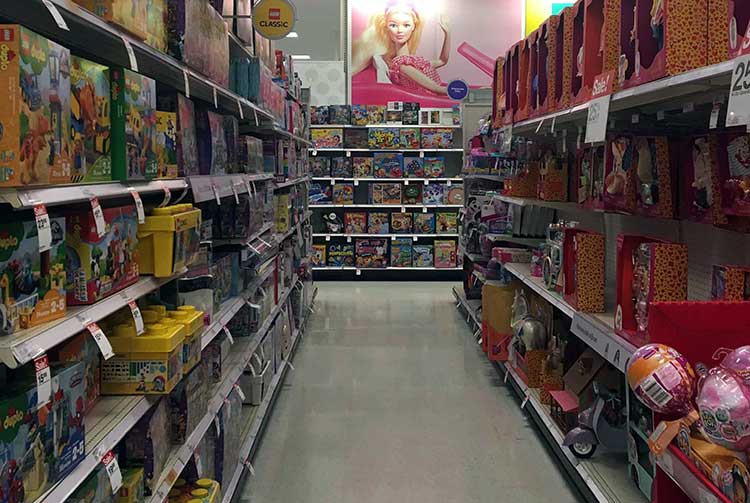Secure your Kid's Spot in our Writing Classes! Register here!

What we're talking about!
Check back often for updates!

The time during the holidays calls for multiple visits to the toy aisles. Walking through them it doesn’t take long to see the presence of pink and blue aisles. Growing up as a girl, my toys were all different colors. Well, I grew up with just a handful of toys, but that is a story for another day. My favorite color is blue, the exact shade being the ocean blue color. When my kids were born suddenly I started to see the patterns in color for the children’s clothes and toys.
When my now eight-year old boy was three and was able to voice his ideas into words, he wanted a purple jacket. The only place I could find a purple jacket was the clothes’ aisle for girls, right next to the pink jackets. We never ended up buying a purple jacket. Because the imagery and surroundings all read ‘meant for girls’. No amount of talking convinced him that it didn’t matter. I wondered, if the adult aisles are not segregated by blue and pink, why do we feel the need to do so for the children’s aisles?
A few months later, on Mothers Day, he brought home a neatly framed paper that read ‘This is me’. It had a beautiful picture of him smiling with a bunch of questions and answers. What is your favorite food? What is your favorite story? What is your favorite color? That’s where my eyes stopped. It said blue. He later told me he thought blue was meant as a color of choice for boys. It made a dent in my heart.
That was 2014. In August 2015 American Target stores announced they were creating gender-neutral toy aisles, following a similar move by Toys ‘R’ Us and online retailers such as Amazon. Around this time, parents complained that the lead character in Star Wars: The Force Awakens, female jedi-in-training Rey, was hard to find in stores. Rey appealed to both (traditionally) male Star Wars fans and female ones. Things are certainly changing but not as much as I, as a parent would like. Parents are fed up with the strict princess dresses for girls and action figures for boys.
Stereotyping hurts us, it hurts our future because our children are our future.
Fast forward to 2018 Mothers Day, we are in a zoo and my four-year old boy picks up a beautiful pink unicorn. We did not intend to buy toys that day, we were in the zoo store for a break, to get ice-cream and snacks and go back into the zoo to explore some more. As I was reluctant and showed hesitation, my husband immediately picked it up and said, ‘Beautiful unicorn! I love it.’ Later he told me he did not want to say no because he did not want our child to think that he couldn’t get the unicorn because it was pink.
Why the above story is important? Because the onus is not just on the stores. Online retailers like Amazon suggest the majority of shoppers on their sites still search for products by gender. Such data are concerning as this may point to a deeper problem more rarely acknowledged: that the gendered stereotyping of toys is driven as much by consumers (including parents) as by manufacturers and retailers.
Yesterday at the Target toy aisle, I caught up with a friend who was buying a Lego Star Wars set for her daughter. She expressed concern as to why legos had to be pink and blue or need to be labelled as ‘Friends’ for girls. I agree it is not explicitly labelled as boys or girls but the suggestive optics are hard to ignore.
According to sociologist Elizabeth Sweet, toy companies began intensifying their use of color-coded marketing and segregation of toys in the 1980s. Although it was started to help consumers with what they are looking for this is concerning, she said, because “it encourages a culture where gender stereotypes define a way of life for children.” One study of more than 100 toys showed heavily gender-coded toys were less likely to promote cognitive development than gender-neutral toys.
Gender based compartmentalization in stores and online can have a serious impact on kids’ future skill sets and career aspirations, ultimately affecting the makeup of the workforce. Isn’t that what we are trying to change after all?
For now our toddler bed has a pink unicorn, a pink penguin and a purple sea horse. We also have a brown bear, a grey elephant and a black orca. And we so hope we can keep it that way.
So next time when you buy toys or redecorate your kids’ rooms think beyond these imposed labels and tags. It’s easier said than done but I promise you that one small decision from you will have made a dent in what the future is going to look like.
Priyanka is the Founder and CEO of PopSmartKids, a company created to foster social-emotional learning in children by effective use of technology. A graduate from Purdue University she left her career as a tech exec in 2018 to start a movement of redefining screentime from a monitored time to a powerful tool for mentoring our future generation. She is a mom to two clever boys and a big advocate of digital citizenship for children.
Help your kids fall in love with reading!
Need a list of amazing books to get your kids inspired about writing their own stories?
Grab your free copy by completing the form.
We'll email you the ebook!